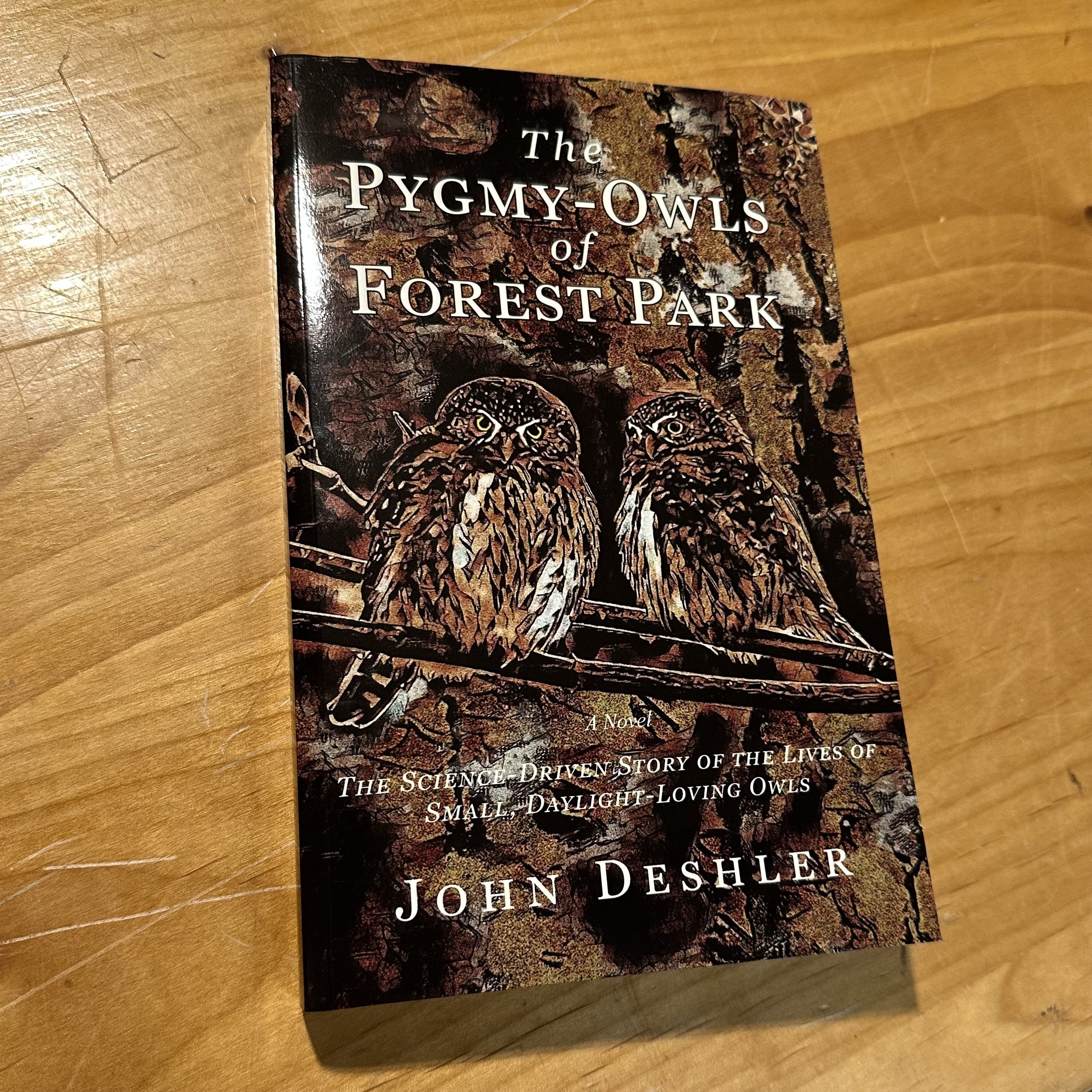 Image 1 of 1
Image 1 of 1


The Pygmy-Owls of Forest Park
BOOK TALK: Sunday, April 27th at 11am here at the Nature Store (5151 NW Cornell Rd Portland). Chat about the book with author John Deshler, get an autographed copy, and then stroll the wildlife sanctuary trails and keep an ear out for Northern Pygmy-Owls!
By John Deshler
A Novel: The science-driven story of the lives of small, daylight-loving owls.
At dawn on a damp May morning, Salazar ascends to a sprig atop a towering Doug fir and sings into the open sky above the mile-wide ribbon of treed foothills that is Forest Park. Salazar is a Pygmy-Owl, a feisty, two -ounce raptor who has controlled the Saltzman Creek watershed for years. He needs the entirety of it for himself, Salina, and their tiny owlets if they are going to make it. Nearby, Mandeep sits atop a grand fir and sings back toward Salazar, desperately trying to lure a prospecting female - or Salina - over to his Maple Creek territory. Half a mile to the southeast, Robel is clutching a deer mouse in his talons and calling softly to Rochelle. Her fifth and sixth eggs hatched this morning and she is reluctant to leave the nest. A spring day in the lives of the pygmy-owls of Forest Park has begun.
The story: Experience an up-close view into the world of three neighboring pairs of wild Northern Pygmy-Owls. Every owl’s fidelity, devotion to offspring, and tenacity are tested as they confront predators, the forces of nature, and one another. Seldom-seen patterns of pygmy-owl behavior and ecology are shown through the owls’ natural actions, calls, and songs. The story also explores the wild owls’ interactions with humanity, including the author, whose own life story is intertwined with theirs. The fate of each of the owls, their ecology, their voices, and their timeless rivalries are ultimately revealed.
About the author: John Deshler is a wildlife biologist and computer scientist. He has researched Northern Pygmy-Owl ecology in Portland, Oregon’s Forest Park for more than 10 years, analyzing relationships between reproduction, diet, body size, timing of nesting, and habitat.
BOOK TALK: Sunday, April 27th at 11am here at the Nature Store (5151 NW Cornell Rd Portland). Chat about the book with author John Deshler, get an autographed copy, and then stroll the wildlife sanctuary trails and keep an ear out for Northern Pygmy-Owls!
By John Deshler
A Novel: The science-driven story of the lives of small, daylight-loving owls.
At dawn on a damp May morning, Salazar ascends to a sprig atop a towering Doug fir and sings into the open sky above the mile-wide ribbon of treed foothills that is Forest Park. Salazar is a Pygmy-Owl, a feisty, two -ounce raptor who has controlled the Saltzman Creek watershed for years. He needs the entirety of it for himself, Salina, and their tiny owlets if they are going to make it. Nearby, Mandeep sits atop a grand fir and sings back toward Salazar, desperately trying to lure a prospecting female - or Salina - over to his Maple Creek territory. Half a mile to the southeast, Robel is clutching a deer mouse in his talons and calling softly to Rochelle. Her fifth and sixth eggs hatched this morning and she is reluctant to leave the nest. A spring day in the lives of the pygmy-owls of Forest Park has begun.
The story: Experience an up-close view into the world of three neighboring pairs of wild Northern Pygmy-Owls. Every owl’s fidelity, devotion to offspring, and tenacity are tested as they confront predators, the forces of nature, and one another. Seldom-seen patterns of pygmy-owl behavior and ecology are shown through the owls’ natural actions, calls, and songs. The story also explores the wild owls’ interactions with humanity, including the author, whose own life story is intertwined with theirs. The fate of each of the owls, their ecology, their voices, and their timeless rivalries are ultimately revealed.
About the author: John Deshler is a wildlife biologist and computer scientist. He has researched Northern Pygmy-Owl ecology in Portland, Oregon’s Forest Park for more than 10 years, analyzing relationships between reproduction, diet, body size, timing of nesting, and habitat.
